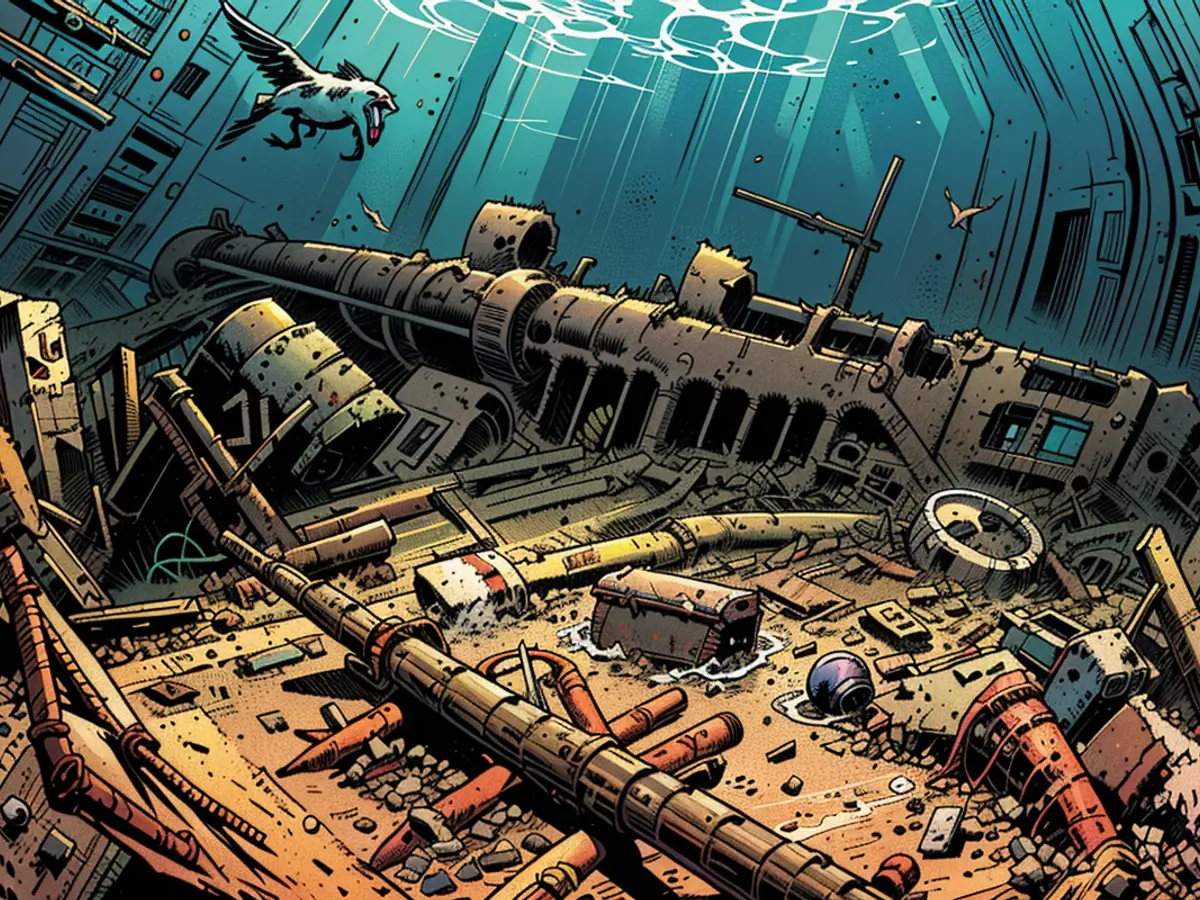Divers find 19th-century shipwreck laden with unopened bottles of champagne and precious mineral water
The long-forgotten vessel was brimming with bubbly, according to the team of Polish divers who made the discovery off the coast of Sweden.
“The whole wreck is loaded to the brim with crates of champagne, mineral water, and porcelain,” Tomasz Stachura, the leader of the Baltictech diving team that found the wreck, said in a press release sent to CNN.

According to the firm’s website, Stachura is “one of the most active wreck divers in the Baltic Sea,” who has “taken thousands of underwater pictures of Baltic wrecks.” Nevertheless, this recent find was different, he said, explaining that some 100 bottles were found onboard.
“I have been diving for 40 years, and it often happens that there is one bottle or two... but to discover a wreck with so much cargo, it’s a first for me,” he said in the release.
The find was “largely a coincidence,” he said, as the divers have been combing the seabed for years in search of sunken ships.

“We were just checking out new spots, which I had been collecting for years, out of pure curiosity, and that’s when we came across this wreck,” said Stachura. “We did not expect it to be anything significant and even hesitated for a moment whether to dive at all.”
Two of the team were determined to take a look, however, on a “quick dive” but were gone for almost two hours, according to a post on the team’s website.
The wreck was “in very good condition” and its cargo was plentiful. “There was so much of it that it was difficult for us to judge the quantities,” the post said.
While the champagne certainly provided cause for celebration, it was the bottles of water that perhaps shed most light on the vessel’s history.
The press release said the water was in sealed clay bottles and branded Selters, “a German brand highly valued in the 19th century, often reserved for royal tables and considered almost medicinal.”
It comes from a mineral spring of the same name in the town of Selters, in the central German state of Hesse, and has been bottled for more than 800 years.
“We managed to take pictures of the brand name stamped on a clay bottle, which turned out to be from the German company Selters – produced to this day,” diver and underwater videographer Marek Cacaj said in the press release.
According to Baltictech’s website, “its value was so precious that transports were escorted by the police.”
“Thanks to the shape of the stamp, and with historians’ help, we know that our shipment was produced between 1850-1867. Interestingly, the pottery factory into which the water was bottled also exists, and we are in contact with them to find out more details.”
The divers notified the Swedish regional authorities about the vessel, which was located about 20 nautical miles south of the Swedish island of Öland. Extracting the bubbly from the boat could take some time, however, due to administrative restrictions, Stachura said.
“It had been lying there for 170 years, so let it lie there for one more year, and we will have time to better prepare for the operation,” he said.
His team is now collaborating with Dutch marine data company MARIS, Södertörn University in Sweden and Professor Johan Rönnby, who oversees Swedish underwater research, to develop guidelines for future exploration of the wreck.
The discovery of the vintage champagne and Selters water bottles suggests that the vessel was likely associated with luxury and style, reflecting the opulence of its passengers in the 19th century. The well-preserved condition of the bottles, which were still sealed, further underscores the high-quality and exclusivity of the items aboard the vessel.








